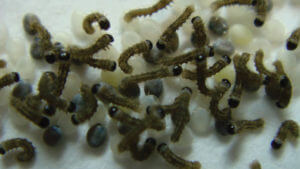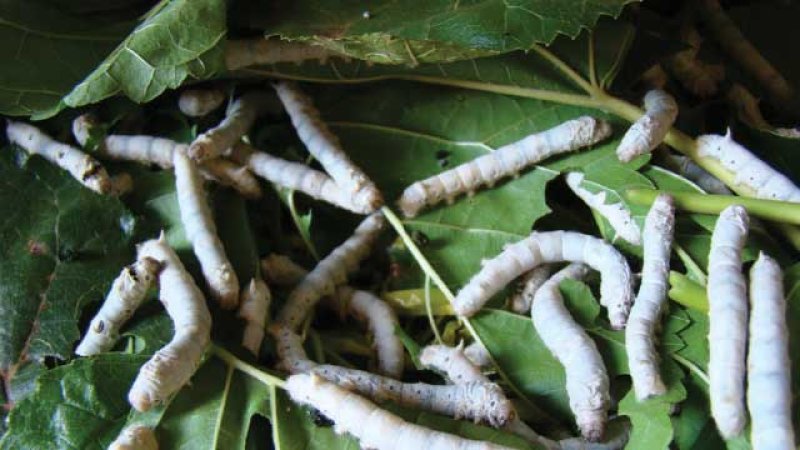In Jon Rice’s office is a small incubator full of tiny insect eggs—one of many such incubators kept at Kraig Biocraft Laboratories (KBL), the Michigan-based polymer development company where Rice is chief operations officer. From these eggs will hatch tiny silkworms, caterpillars of the domesticated silk moth Bombyx mori….
But these are no ordinary silkworms…. For a start, “the eyes and the feet of our silkworms glow, if you look at them under the right UV filter,” he explains. And the cocoons the silkworms later produce “have a slight greenish hue.”

The glow comes courtesy of a fluorescent protein used as a marker to confirm that several genes for spider-silk proteins have been successfully edited into the silkworm genome. Unlike regular domestic silkworms…KBL’s stock is raised to produce what the company hopes may be one of the toughest fibers on earth.
…
The company has created 20 transgenic lines of silkworms that spin cocoons containing spider silk proteins. Dragon Silk, one of the latest products made from the fibers of these cocoons, is stronger than steel and tougher, lighter, and more flexible than Kevlar (though it has slightly lower tensile strength than this synthetic fiber). The company now holds a million-dollar contract with the US Army, which is exploring possible uses in defensive clothing and other gear.
The GLP aggregated and excerpted this article to reflect the diversity of news, opinion and analysis. Read full, original post: Meet the Transgenic Silkworms That Are Spinning out Spider Silk































